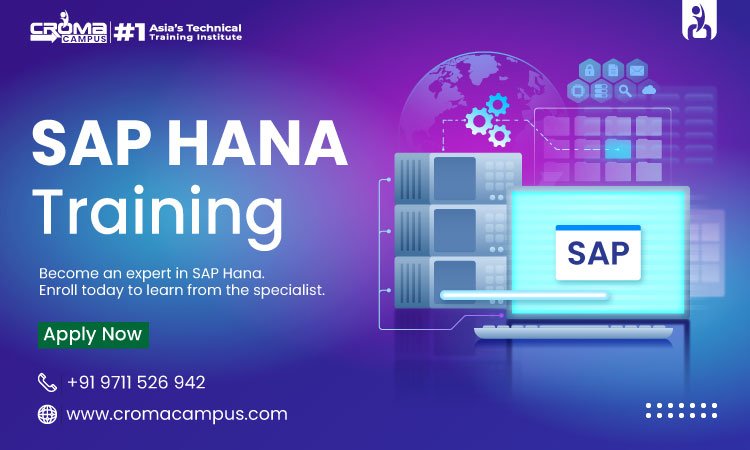
Introduction
SAP HANA stands tall as a frontrunner, revolutionizing the way businesses manage their data and processes. As companies increasingly rely on data-driven decision-making. Hence, mastering advanced techniques and best practices in SAP HANA becomes imperative. SAP HANA Course helps to explore advanced functionalities and offers insights into best practices for optimal utilization. SAP HANA is an in-memory, column-oriented, relational database management system. Its in-memory computing engine enables rapid processing of massive volumes of data, facilitating real-time analytics and insights. So, by storing data in RAM rather than on traditional disk-based storage. Moreover, SAP HANA accelerates data retrieval and processing. Thereby enhancing performance and efficiency.
Advanced Techniques in SAP HANA
- Data Modeling and Optimization: Effective data modeling is critical for maximizing the performance of SAP HANA. So, utilize techniques such as star schema modeling, which organizes data into a central fact table surrounded by dimension tables, optimizing query performance. Additionally, leverage advanced modeling constructs like calculation views and graphical calculation views for complex analytics scenarios.
- Partitioning and Distribution: Partitioning divides large tables into smaller, more manageable segments. Hence, improving query performance and parallel processing. Similarly, data distribution across multiple nodes enhances scalability and fault tolerance. Further, employ partitioning and distribution strategies based on workload characteristics and data access patterns for optimal resource utilization.
- Memory Management: SAP HANA’s in-memory architecture necessitates efficient memory management practices. So, configure memory parameters such as allocation limits, eviction policies, and memory sizes based on workload requirements and system resources. Moreover, monitor memory consumption regularly and implement techniques like data tiering to manage data placement across different storage tiers effectively.
- Advanced Analytical Capabilities: Explore SAP HANA’s advanced analytical capabilities, including predictive analytics, text analytics, and spatial processing. So, use predictive algorithms for forecasting and trend analysis, harness text analytics for sentiment analysis and text mining, and utilize spatial processing for location-based analytics. Furthermore, integrating these capabilities into your analytical workflows enhances decision-making and insights generation.
- Data Integration and Replication: Seamless integration of disparate data sources is essential for comprehensive analytics in SAP HANA. So, utilize SAP HANA Smart Data Integration (SDI) and Smart Data Access (SDA) to connect to various data repositories, including SAP and non-SAP systems. Moreover, employ real-time data replication techniques to ensure data freshness and consistency across systems.
Best Practices for SAP HANA
- Performance Optimization: Continuously monitor and tune SAP HANA performance to ensure optimal system throughput and responsiveness. So, utilize tools like SAP HANA Cockpit and SAP Solution Manager for performance monitoring and analysis. Moreover, implement indexing, caching, and query optimization techniques to enhance performance for specific workloads and queries.
- Security and Compliance: Prioritize security and compliance considerations in SAP HANA deployments to safeguard sensitive data and reduce risks. Additionally, implement role-based access control (RBAC), encryption, and data masking techniques to control access and protect data integrity. Further, regularly audit user activities and enforce security policies to adhere to regulatory requirements.
- High Availability and Disaster Recovery: Establish robust high availability (HA) and disaster recovery (DR) mechanisms to ensure business continuity and data resilience. Moreover, implement SAP HANA system replication for synchronous data replication between primary and secondary sites. Thus, enabling rapid failover in the event of system outages. Hence, regularly test HA/DR procedures to validate their effectiveness and reliability.
- Data Lifecycle Management: Adopt effective data lifecycle management (DLM) practices to optimize storage utilization and mitigate costs. Additionally, define retention policies for historical data archiving and purging, balancing data accessibility with storage efficiency. So, implement data aging and partitioning strategies to manage data growth and optimize query performance over time.
- Continuous Learning and Skill Development: Stay up-to-date on SAP HANA advancements and best practices through continuous learning and skill development initiatives. Moreover, use resources such as SAP training courses, online tutorials, and community forums to enhance proficiency in SAP HANA administration, development, and optimization. Also, encourage knowledge sharing and collaboration among team members to promote a culture of continuous improvement.
Future Scope of SAP HANA
SAP HANA, with its in-memory computing capabilities, has been transforming the landscape of enterprise resource planning (ERP), data analytics, and database management. As of my last update in January 2022, SAP HANA continues to evolve, and there are several areas where its future scope is promising:
Real-time Analytics: SAP HANA enables businesses to perform real-time analytics on large volumes of data. With the increasing importance of data-driven decision-making, the demand for real-time analytics solutions will continue to grow. Future developments in SAP HANA are likely to focus on enhancing its capabilities for real-time data processing and analysis.
Advanced Analytics and Machine Learning: SAP HANA provides advanced analytics capabilities, including predictive analytics and machine learning. As businesses seek to gain deeper insights from their data and automate decision-making processes, there will be a growing demand for advanced analytics and machine learning features in SAP HANA. Future developments may focus on integrating more advanced machine learning algorithms and tools into the platform.
Cloud Adoption: SAP has been heavily investing in cloud technologies, and SAP HANA is no exception. The future scope of SAP HANA includes increased adoption of cloud-based deployments. This includes not only SAP HANA Cloud but also integration with other cloud platforms such as AWS, Azure, and Google Cloud Platform. Cloud adoption offers scalability, flexibility, and cost-effectiveness, making it an attractive option for businesses of all sizes.
IoT and Big Data: The Internet of Things (IoT) and big data are generating vast amounts of data from various sources such as sensors, devices, and social media. SAP HANA is well-positioned to handle this data deluge and provide valuable insights for businesses. Future developments in SAP HANA may focus on enhancing its capabilities for ingesting, processing, and analyzing IoT and big data streams.
Integration with SAP S/4HANA: SAP S/4HANA is the next-generation ERP suite from SAP, built on the SAP HANA platform. As more businesses migrate to SAP S/4HANA, the demand for SAP HANA expertise will increase. Future developments in SAP HANA will likely focus on seamless integration with SAP S/4HANA and other SAP solutions, enabling businesses to leverage the full potential of the SAP ecosystem.
Data Privacy and Security: With increasing concerns about data privacy and security, future developments in SAP HANA are likely to focus on enhancing its data encryption, access controls, and compliance features. This will help businesses ensure the confidentiality, integrity, and availability of their data in SAP HANA deployments.
The future scope of SAP HANA is promising, driven by the growing demand for real-time analytics, advanced analytics and machine learning, cloud adoption, IoT and big data, integration with SAP S/4HANA, and enhanced data privacy and security features. As businesses continue to digitize and rely on data-driven insights, SAP HANA will play a crucial role in enabling them to harness the full potential of their data.
Conclusion
SAP HANA empowers organizations with advanced capabilities for real-time analytics, data processing, and decision-making. So, by delving into advanced techniques and best practices, businesses can harness the full potential of SAP HANA to drive innovation, agility, and competitiveness. Additionally, SAP HANA Certification plays an important role in entering this domain. From data modeling and optimization to performance tuning and security, mastering SAP HANA intricacies is essential for maximizing ROI and unlocking transformative insights in the digital era.




